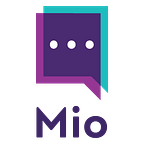Migrating from Jabber to Webex, but have Slack Users?
Cisco recently announced businesses can now connect Jabber to the Webex cloud. This new hybrid solution for communication is excellent for companies making a gradual migration to Webex. This all seems great, until you realise you have users that have both Slack and Jabber.
Organizations using Jabber will have the opportunity to enable Team Messaging modes. This upgrade will bring core features of Webex into Jabber. On-premises and cloud users should benefit from a more consistent experience.
If you’re keeping your infrastructure on-premises for now, the new integration means you can still access the features of the Webex cloud. Cisco intends this integration to be a bridge for people moving from Jabber to Webex.
Why migrate Jabber to Webex?
The hybrid setup is useful for today’s enterprises. It ensures that you can federate your Jabber client with Webex. That means that users in both platforms can connect without switching apps.
Essentially, Cisco is offering an alternative approach to the rip and replace migration method. Rather than telling team members they can no longer use a specific app and removing it from the workforce; you can transition them slowly.
- Add your organisation to the Cisco Platform Identity service. Check in the Cisco Control Hub to see if your business has already been added.
- Set up SSO for Cisco Platform Identity if you use single-sign-on for Webex
- Go to the Control Hub and click on Services then choose Message > Messenger
- Scroll down to Options and click on Webex/ Jabber Interop then hit save
While this solution supports your Jabber and Cisco Webex users, it doesn’t help team members using other apps. What do you do if you have employees on Slack too? There’s no button for Jabber and Slack or Webex and Slack interoperability.
Migrating Slack to Webex
Unlike a migration from Jabber to Webex moving from Slack to Webex is much harder. You’ll need to move all of the data in your Slack workspaces into Cisco. This means:
- Visiting Your Profile > Admin > Workplace Settings.
- Clicking on Import/Export Data and download all of your information.
- Sending your content directly to Webex if it’s smaller than 2GB. If you have more than 2GB of data, you’ll need a third-party service like Dropbox.
If the files you move from Slack to Cisco Webex are too large, you may end up losing critical data packets. You’ll also have the challenge of encouraging adoption to face with a migration from Slack to Webex. Your Slack users can easily continue to use their favorite app behind your back if they’re not happy on Cisco. That’s where problems like shadow IT and workplace silos begin to emerge.
Why choose integration over migration when dealing with Jabber and Slack?
Humans are creatures of habit.
We decide which tools we like to use and stick by them. By integrating Jabber and Webex, Cisco is creating a familiar environment that your staff members may feel more comfortable adopting. However, this doesn’t solve the problems of migrating users from other tools to Webex.
Even if you managed to transition all of your employees successfully, you might find that you need to compromise on tools and plugins. Not all collaboration apps feature the same integrations. This means that your workflow suffers while your employees adapt to the alternatives. The good news is that there is a better way.
Rather than forcing users to choose from Slack and Webex, Mio can help.
Mio for Slack and Webex
It’s becoming easier for companies to connect teams on dispersed apps from the same vendor. However, the challenge comes in syncing staff members, regardless of what app they use.
The good news is that there are innovators out there working to solve this integration issue. Mio integrates your messaging platforms. With Mio, you can avoid vendor lock-in and give your teams the freedom to use the apps they prefer.
Whether you’re messaging on Slack or Webex, your employees will be able to see and connect with each other seamlessly. You can even send a file to a user on Slack through Cisco Webex, and vice versa.
Are you ready to discover what you can accomplish with Mio? Learn more with this video!
Thanks for reading! Be sure to leave a comment, and follow us on LinkedIn & Twitter to join in the messaging conversation.
